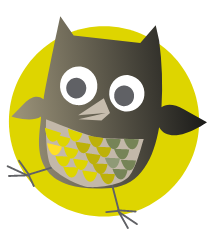Revision can be fun… yes, really
“Revision doesn’t just mean poring over a revision guide or completing a practice paper. This week I’m going to share some ways of preparing for the KS2 national tests that might actually be (whisper it) fun.”
Hello, I’m James Clements. For ten years, I worked as a teacher and deputy head at a successful primary school in West London. For seven of those years I taught Year 6. As well as making sure the children I taught achieved their very best, a big part of my job was working with parents so that they could help their children in the final year of primary school. I’m also the parent of two small children.
Revision doesn’t just mean poring over a revision guide or completing a practice paper. This week I’m going to share some ways of preparing for the KS2 national tests that might actually be (whisper it) fun.
Writing a test paper
Setting a question or paper quiz for someone else can be a great revision activity for children. This might focus on one area of the curriculum (writing a maths test, for example) or a Year 6 quiz, with questions from different areas of the curriculum, including parts that aren’t tested by the SATs like history, geography or science. Of course, any test they make will require the child to create a detailed mark sheet with the correct answers on it too. If you’re the parent sitting the quiz and you get some questions wrong, you just might need your child to sit and show you how to work out the right answer, something that is really useful for building their understanding.
Family learning challenge
Set the whole family the challenge of learning one new thing per day. If you’re helping your child to prepare for the tests, it might a particular times table, a fiendish spelling, a new word to use in their writing or something tricky from the grammar and punctuation test. Don’t forget to check that they can remember it the next day.
Highlighters
Never ever underestimate the power of a colourful highlighter pen to an 11-year-old. Highlighting number facts or spelling words on a chart that everyone can see or in a special book is a great way of recording progress. And making progress visible makes children feel good about their learning, something that will hold them in good stead at secondary school.
Beat the calculator
If they’re really good at their multiplication tables, a child should be able to come up with the answer to anything up to 12 x 12 before someone else can type it into a calculator. This works well as a competition with a friend, parent or even a younger sibling doing the typing. And of course the parent has to have a go against the calculator too. It’s only fair.
Make a ‘how to…’ film
The internet is full of films that explain different areas of the curriculum – from long division to the tricky-to-remember bits of grammar. If your child is struggling with one particular area, you could make a film of it ‘to help other people’. The process of choosing an example, writing a script and then filming it might be enough to make it stick.
Reading
This is one of the simplest and most educationally-valuable ways a child can spend their time. Extended reading time is great for developing children’s fluency and comprehension, building their vocabulary and their general knowledge. It also helps to support their writing. And sometimes we need to give children time to do it so that they can see it’s an enjoyable thing to do.
Want to read more?
Read James’ earlier posts here.
More from Oxford Owl
- Read more KS2 SATs advice and help for parents for more tips on supporting your child
- Browse Bond SATs Skills workbooks and flashcards
